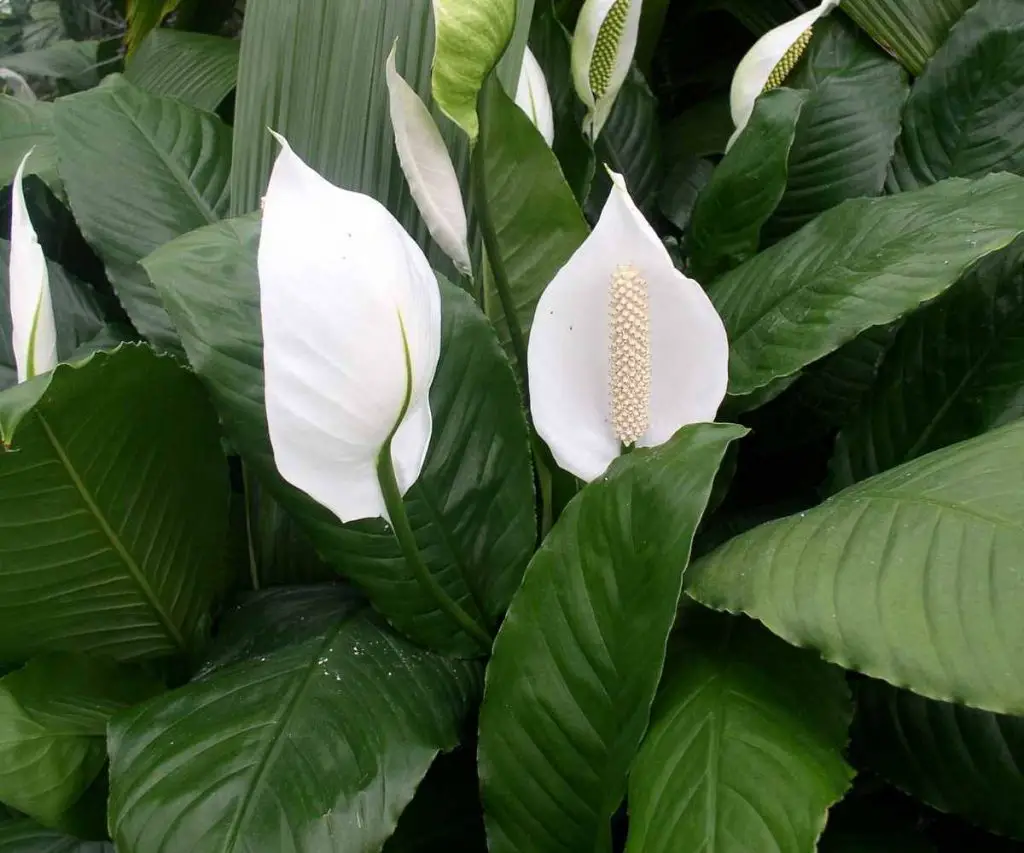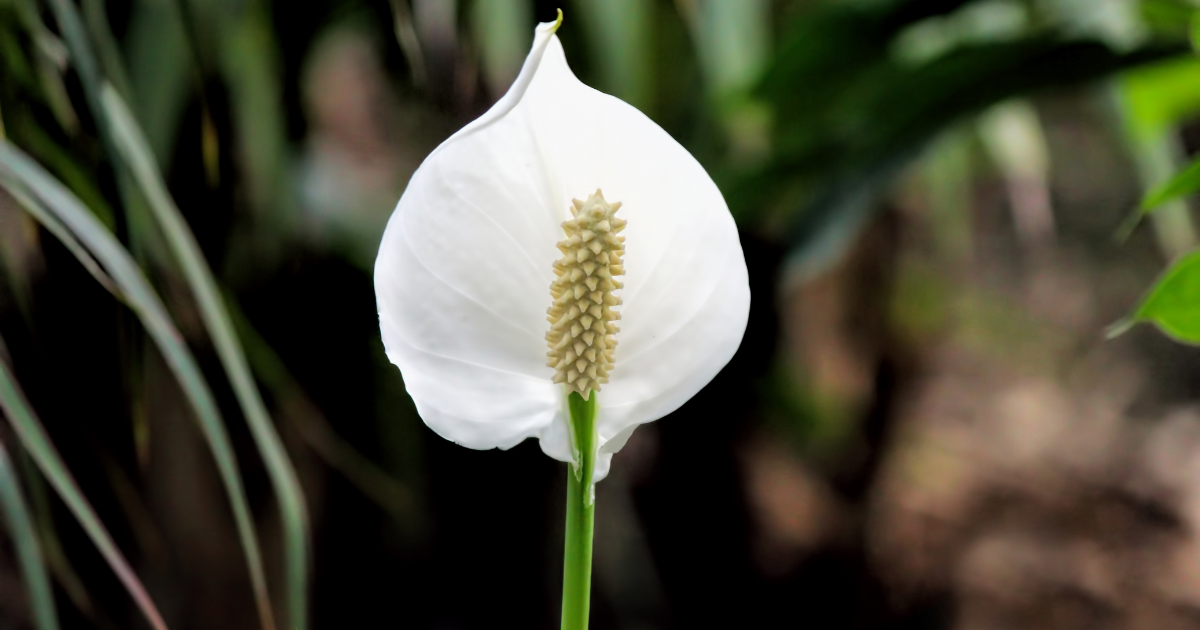With their graceful white blooms and easy care nature, peace lilies are one of the most popular houseplants around. But did you know these tropical plants can also thrive outdoors in warm climates? While peace lilies are primarily grown as indoor plants, some gardeners have success overwintering them outside. Read on to learn if peace lilies can survive outdoors in winter.
An Overview of Peace Lily Care Needs
First, let’s do a quick recap of ideal growing conditions for peace lilies:
- Temperature – Prefers consistent temperatures between 65-75°F. Avoid cold drafts below 50°F.
- Light – Does best in bright, indirect light. Direct hot sun will scorch leaves.
- Water – Likes consistently moist soil. Allow potting mix to partly dry out between waterings.
- Humidity – Thrives in average household humidity, Higher humidity encourages blooms,
- Soil – Grows best in a loose, peaty potting mix that retains some moisture.
When cared for properly indoors, peace lilies readily flower and make excellent houseplants. But how do they fare moved outdoors?
Factors for Outdoor Winter Survival
Peace lilies are tropical plants native to the steamy rainforests of Central and South America. Naturally, they prefer warm conditions typical of USDA zones 10-12. However, several factors influence whether peace lilies can successfully make it through winter outdoors:
Climate and Temperatures
- Mild coastal and southern climates provide the best shot for outdoor survival.
- Consistent frosts below 30°F will likely kill the plant. Brief light freezes may be tolerated.
- Temperatures fluctuating widely above and below 50°F cause stress.
Microclimate Modification
- Some cold protection can be provided by planting near heat sinks like south-facing walls.
- Covering the plant during cold snaps helps maintain warmer conditions.
- Locations protected from wind and weather extremes aid survival odds.
Plant Health and Vigor
- Plants grown indoors year-round tend to be less cold hardy when moved outside.
- Robust, well-established plants have a better chance than small starter plants.
- Avoid fertilizing late in the season so growth can harden off for winter dormancy.
- Low light levels weaken plants over winter. Ensure adequate sunlight.
Caring for Peace Lilies Overwintered Outdoors
If attempting to overwinter peace lilies outside, provide the best possible care to improve the plant’s odds:
- Move the plant outdoors in spring after the danger of frost has passed.
- Select a sheltered location protected from excessive rain and cold winds.
- Check soil moisture frequently and water whenever the top few inches become dry.
- Apply a balanced fertilizer every 6-8 weeks during the growing season.
- Prune off any damaged or diseased leaves and spent flower stalks.
- Mulch around the base with 2-3 inches of bark chips or straw to insulate roots.
- Cover the plant with burlap, frost cloth, garden fabric, or an inverted bucket when temps drop below 45°F.
- Cut back on watering in fall to encourage dormancy before cold weather arrives.
- If feasible, move into a garage, enclosed porch, or greenhouse as an added buffer when winter hits.
Is it Worth attempting to Winter Peace Lilies Outside?
Overwintering peace lilies outdoors is certainly possible in warm climates with diligent care. However, some gardeners report losing plants after successfully getting them through one or more winters. The risks of an unexpected freeze, disease, or other issues killing the plant are significant.
Many gardeners determine the hassle of providing sufficient overwinter protection just isn’t worth it. They choose to keep peace lilies as houseplants and simply buy new plants each spring.
If you wish to experiment with overwintering peace lilies outside, start with vigorous, expendable plants. Try different protection methods like cloches, cold frames, and horticultural fabrics. And don’t get too attached – your peace lily may not make it through!
For the vast majority of gardeners, the easiest solution is enjoying peace lilies as low maintenance houseplants. They will reward you with gorgeous blooms indoors for years to come. But in warm climates, transitioning these tropicals to the garden in spring and summer remains a fun possibility for adventurous green thumbs.
Watering and Feeding in an Outdoor Setting
- More Watering: Because your peace lily will be getting more light, air flow, and maybe even higher temperatures outside, it will probably need to be watered more often than it did inside. This higher frequency should always be paired with careful monitoring of the soil’s moisture level, though.
- Checking the Soil Moisture: You can get a better idea of when to water your peace lily by checking the soil moisture up to two inches deep. The wind and sun can quickly dry out the soil on the surface outside, but the soil deeper down may still be wet.
- Fertilizing: You should be very careful when feeding your peace lily outside. It can grow with the help of a balanced, slow-release fertilizer used during the growing season. But it’s important to stick to the dosage given so that plants don’t get too many nutrients, which can be bad for their health.
Seasonal Care for Peace Lily Outdoors
During hot summers, your peace lily will appreciate additional watering and possibly misting to maintain humidity. However, be cautious of waterlogging, which can lead to root rot.
If you live somewhere with mild winters, you might be able to keep an outdoor peace lily alive with some frost protection, like a plant cover. However, in regions with harsh winters, its best to bring the plant indoors or into a greenhouse.
STOP Killing Your Peace Lily | 10 Mistakes and How to Fix Them
- The Ultimate Guide to Growing Strawberries in Raised Beds - August 8, 2025
- No-Dig Garden Beds: The Easiest Way to Grow a Beautiful Garden - August 6, 2025
- How to Protect and Preserve Wood for Raised Garden Beds - August 6, 2025


